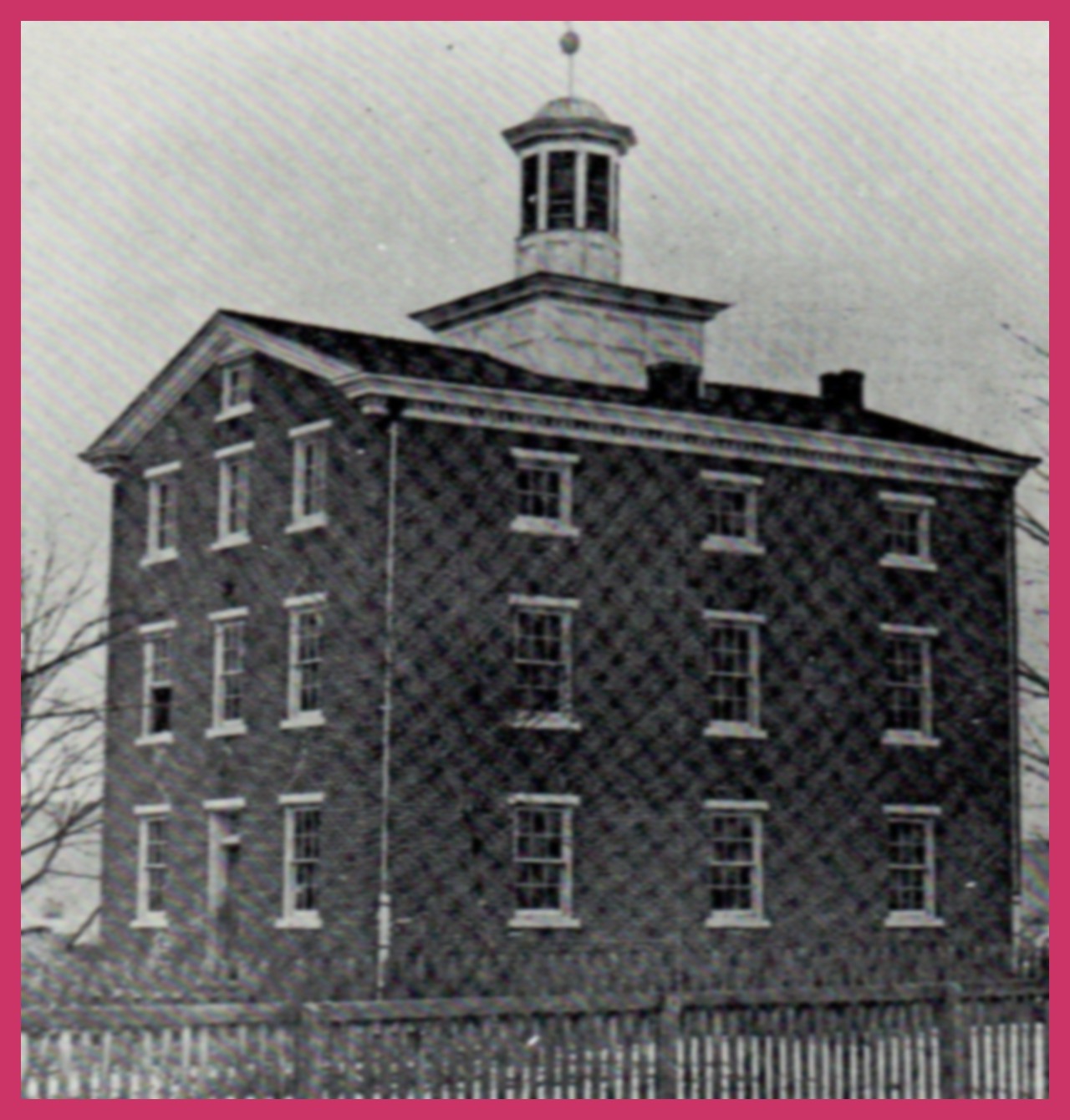 A photograph of the Berrysburg Seminary, Berrysburg, Dauphin County, Pennsylvania.
A photograph of the Berrysburg Seminary, Berrysburg, Dauphin County, Pennsylvania.
The following is a description and history of this school as it was presented in the Historical Book of Berrysburg and Mifflin Township, published in 1969 for the Sesquicentennial.
It was a difficult matter to secure properly prepared home teachers during the period immediately following the adoption of the common school law in 1834.
The first school in eastern and central Pennsylvania affording facilities for a higher education was the Berrysburg Seminary. It was founded in 1851 by the Rev. Henry S. Bassler, a minister of the Reformed Church, and a man of liberal spirit and progressive ideas. He owned the farm just north of town presently owned by Albert Mauser. He set apart about one and a half acres of ground and with scarcely any money, and with no assistance from others except some labor which the citizens contributed, he erected the building which for many years was the home of the Seminary.
The building was about thirty-five by fifty-five feet, three stories in height, and built of brick, which were made nearby. On the first floor was the school-room. The second floor had eight rooms for use by the students for it was also a boarding school. The third story had only six rooms. At the end of the hall on this floor there was a room which extended across the entire east end of the building. This was intended for a recitation room.
Rev. Bassler had also personal charge of the management of the Seminary. He hired the teachers and furnished board in his own family to the students who roomed in the building. Due to financial stress he sold the building at the end of about two years to Mr. Aaron P. Lark (24 March 1854). It was under Mr. lark’s control until 10 June 1859, when he formed a stock company, which conducted the school until the building was sold to the borough in 1871. The upper two stories were thrown into one room for the public high school; the lower room being then used for the primary school.
The stockholders met 10 June 1859, adopted a constitution and elected the following officers: Lot Bergstresser, president; Aaron P. Lark, secretary; Benjamin Romberger, treasurer; Daniel Romberger and John Harman, trustees, one year; Jonathan Swab and Peter Bishop, trustees two years; and John Miller and J. D. Snyder, trustees, three years.
Prof. Peter Bergstresser, the 5th, 9th and 12th principal, was in charge of the Seminary the longest of all teachers. He was a local boy, the son of Lot Bergstresser. His college career was interrupted several times to come home and take charge of the school. He did graduate from Lafayette College in 1866 and returned to the Seminary in 1867 and remained until 1874. During that time hundreds of young men and women were under his instructions, and their success in business, in teaching and in the learned profession is the best tribute to his influence and ability as a teacher.
A complete list of those who attended the school, the principals, faculty, officers and directors appears in the History of Berrysburg Seminary published in 1904 by the Elizabethville Echo, compiled by D. C. Lubold, a member of the Class of 1879, who delivered the address at a Reunion of the Alumni and Students held in Berrysburg, Pennsylvania, Thursday, 11 August 1904. A total of 139 students attended the Seminary – 45 ladies, 94 gentlemen.
After 1871, the building was used for public school in winter months and for higher education during the summer months.
In 1874, Prof. H. J. Hockenberry, of Martinsburg, West Virginia, was elected principal of the high school. He was a dynamic teacher and became very popular. Several years after coming to Berrysburg, Prof. Hockenberry became involved in an unfortunate church controversy. An opposition was developed that entirely controlled the school board in 1879, and elected another principal for the high school. The friends of Prof. Hockenberry, not wishing him to leave the place, rented the Odd Fellows Hall, later the United Brethren Church, where he continued to teach for three years. To his pupils and friends, where Prof. Hockenberry taught, there was the seminary. The people for many miles around took sides in the contest, and during those three years the town was crowded with students.
In the meantime, Prof. Hockenberry and friends were perfecting plans to place the Seminary on a permanent basis by incorporating it and erecting new buildings. On 21 February 1881, a perpetual charter was granted to the Seminary by the Dauphin County County, which provided for thirteen directors, three of whom were to act as president, secretary and treasurer, respectively. The directors were: J. S. Snyder, president; M. W. Sponsler, secretary; Josiah Yeager, treasurer; Valentine Lenker; Martin P. Weaver; Hiram Matter; Benjamin Bordner; Benjamin Romberger, all of Berrysburg; Daniel Buffington, Gratz; Benjamin Rickert, Loyalton; James Miller, Elizabethville; Samuel Horning, Carsonville; and G. W. D. Enders, Fisherville.
In the summer of 1882, Prof. Hockenberry, becoming discouraged with the conditions existing here, accepted the principalship of the Carbondale schools. The fall term, which he had begun, was completed by Prof. H. D. Gise and Miss Katie D. Miller. Prof. Hockenberry returned for commencement and delivered the diplomas to eight graduates. This has been regarded as the end of the Berrysburg Seminary, The old brick building was used for school purposed until the year 1891, when it was torn down and the bricks used in the new public school building erected opposite the Lutheran and Reformed Church, now Peace United Church of Christ.